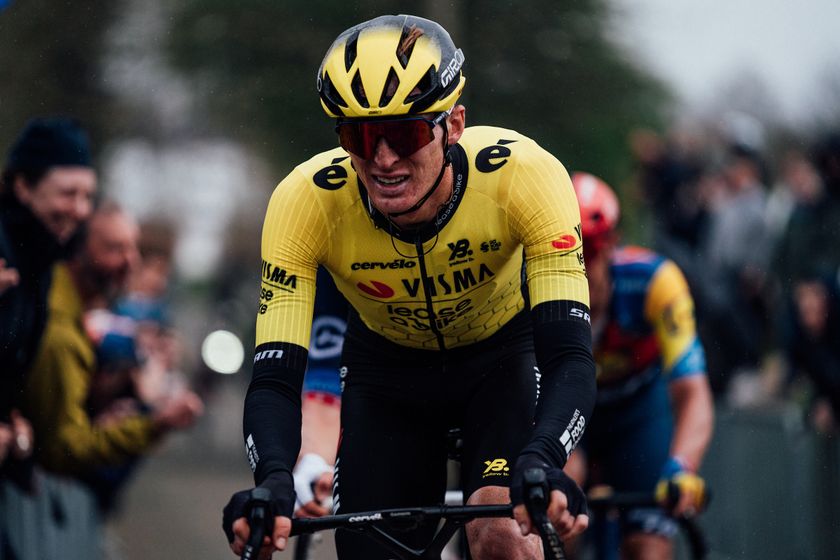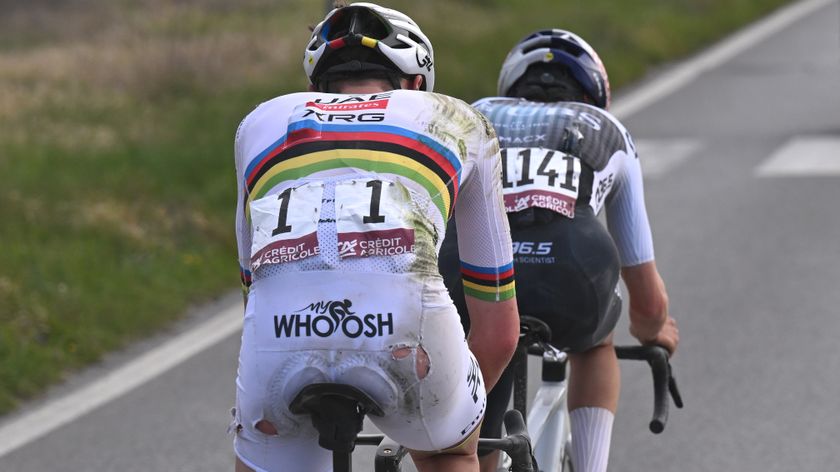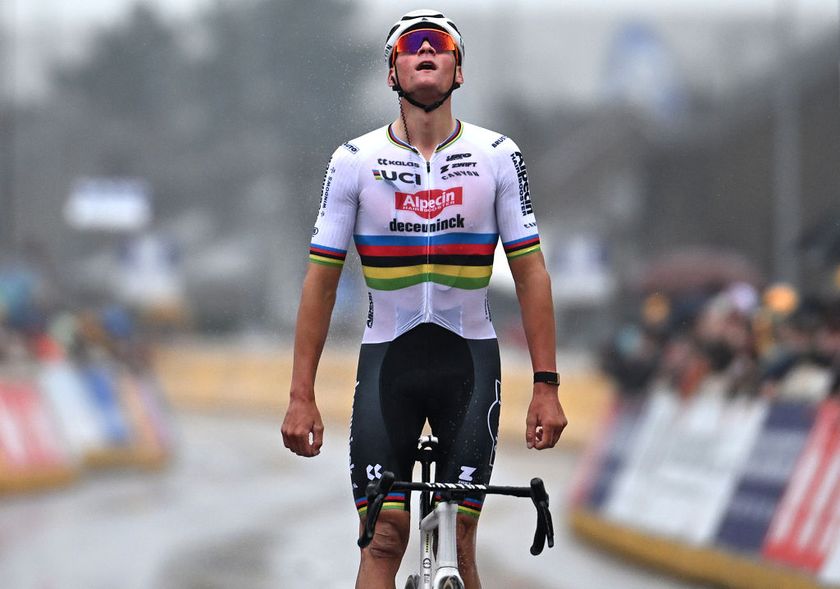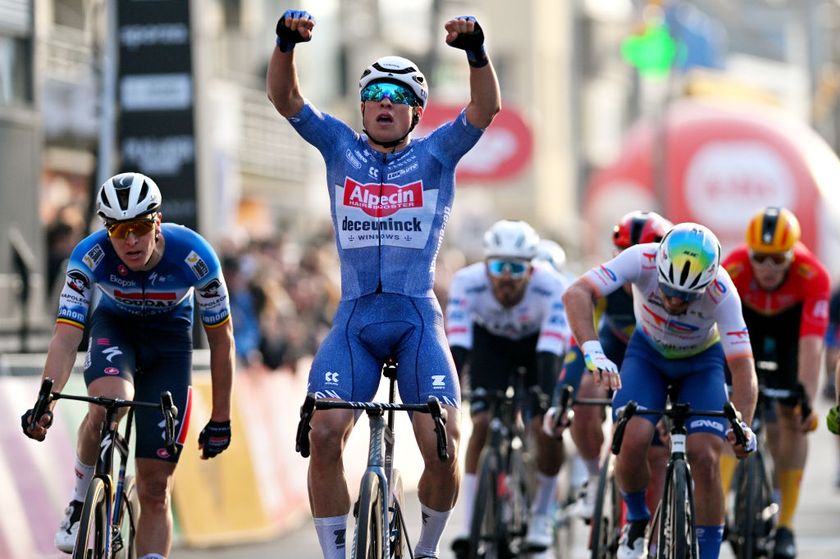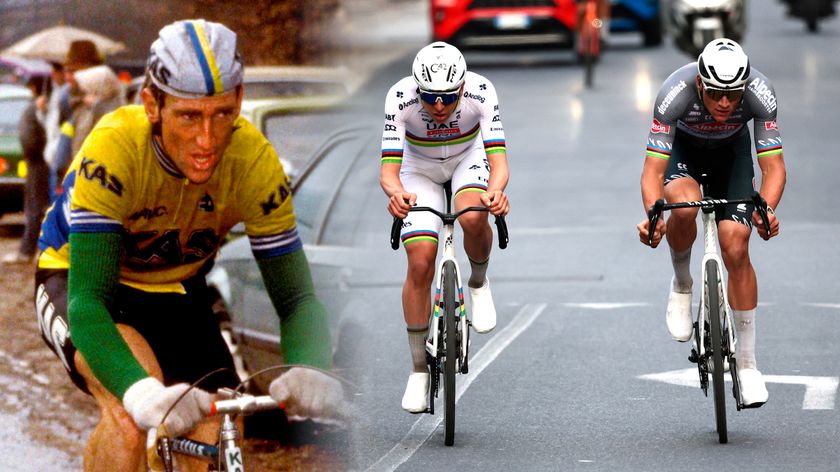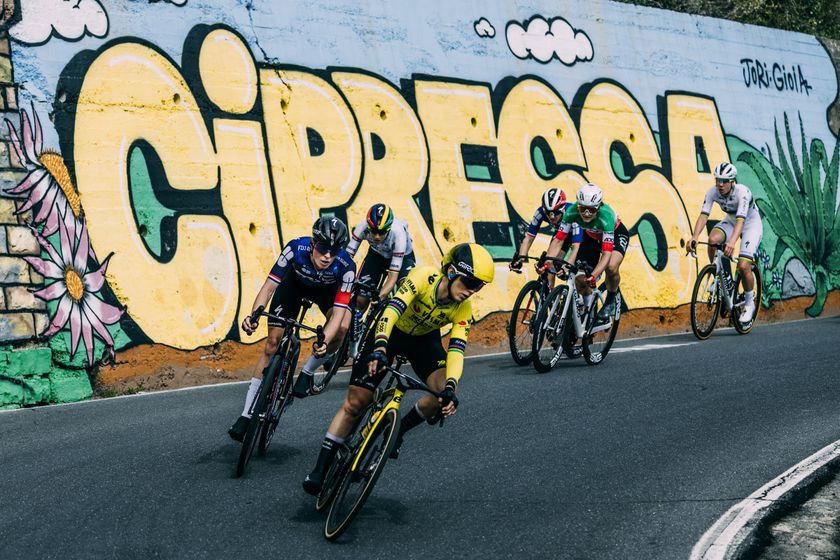Michael Rogers' guide to Tour de France altitude camp preparation
Three-time world champion on living and training amongst the clouds

As anticipation builds towards the start of the 2017 Tour de France, there will be much speculation on the preparation of race favourites. Who is showing the form of previous years and which is the strongest team are common themes throughout the month of June.
Scientific study on altitude training
Rogers quits Tour de Suisse to head to altitude
inCycle video: Altitude training with Tinkoff-Saxo
Gallery: Giant-Alpecin prepare for the Tour de France with altitude camp
Michael Rogers' career in pictures - Gallery
Sagan and Kittel train at altitude in USA ahead of Tour de France
Going hand-in-hand with these broad-based observations is the topic of Altitude. Professional Cycling Teams invest a lot of time, money and human resources into altitude training camps. And rightly so because from what I experienced during my 16 years as a professional, altitude training works. But does living and training at 1600-2400m for two-plus weeks produce changes at a cellular level that translate to improved performance? Or do altitude camps create a unique training effect which is the result of completing 2500 to 4000m of climbing per day over a two-three week period?
Whatever the answer it's clear that to be considered a general classification contender in any of the three Grand Tours you must spend a lot of time living and training up amongst the clouds.
When looking at the time away from family, the cost and hassle of going to altitude and the physical challenges faced once there I said to myself on more than one occasion "this had better be worth it"? And by worth it I mean I wanted to see and feel an improvement in performance after exposure to Altitude. But before I share some of my own observations about altitude training I'll hand over to Sports Scientist Daniel Healey to set the scene on why all this effort is worth it. Daniel and I worked together on this precise topic in 2015 where we planned a very successful altitude camp prior to victory in the Giro that same year.
"It's been known for centuries that we live submerged at the bottom of an ocean of air and the pressure it exerts upon us decreases the higher we climb. At sea level the barometric pressure of air is 760 Torr (mmHg) however at the top of Mount Everest this pressure drops to 250 Torr. This gradual decrease in pressure as you climb higher is the main driver for some of the adaptations we see in riders training at altitude. Of course we don't train anywhere near as high as most mountaineers would routinely climb.
"Instead there seems to be a sweet spot of around 1600 to 2400m that works best for riders. Interestingly this altitude band coincides with cabin pressure on most commercial aircraft. But the key detail here is that the partial pressure of Oxygen (O2)at 1600-2400m is sufficient to ensure that blood is saturated with O2 in the resting state. But as soon as you start training at this altitude a fine line is crossed and the body is placed under increasing stress; which ultimately drives adaptations".
In my case, when I arrived at Altitude the physical sensations were so consistent and repeatable that I always thought there has to be something constructive going on within my body. From the outset my breathing was faster and interrupted sleep became the norm. But instead of worrying about these things I took it as a sign that my body was being put under stress and once I had made it through the appropriate period of acclimation I would emerge stronger and better for the experience. Some people do not respond well to altitude.
Get The Leadout Newsletter
The latest race content, interviews, features, reviews and expert buying guides, direct to your inbox!
From my experience with various teams and numerous altitude camps these non-responders are the exception rather than the rule. And although it was unnerving at first it was good for me to learn that faster breathing and poor sleep had a logical basis as Daniel will explain: "As mentioned earlier the altitude band 1600-2400m is where cyclists derive the most benefit because here the partial pressure of O2 is sufficient to saturate the blood while the rider is resting. However as soon as they start walking around (or riding) the muscles demand for O2 outstrips supply so respiration increases to compensate. There is some fascinating physiology occurring at this time and the detail I like most surrounds the intelligent design underpinning this faster breathing. There are sensors called chemoreceptors located in the neck that detect a reduced level of O2 in the blood and send a signal to the respiratory centre of the brain to increase breathing.
"These chemoreceptors monitor the O2 concentration of blood entering the brain and will upregulate respiration accordingly. However faster breathing carries a consequence which manifests in poor sleep when 'Living High'. The increased rate of breathing combined with minimally acceptable partial pressure of O2 results in significant loss of Carbon Dioxide (CO2) from the body. It's actually the concentration of CO2 which drives normal breathing so any CO2 deficit will cause interruptions to the breathing cycle. It's not uncommon for some riders to wake suddenly with a loud gasp simply because the previous hours sleep was completed at high respiration rates and they lost too much CO2. More common is the sensation that sleep was light and restless".
If you speak to mountaineers they will tell you that high altitude starts at 3000m or 10,000ft, however I recall some of my hardest days on the bike were all between 2000-2400m above sea level. On a few occasions I raced above 3000m during the Tour of Colorado, but it was brief and not pleasant. Luckily the descent gained momentum soon after and I could feel a gradual reawakening of sorts as O2 began pouring back into my lungs. To think there are people who live and work above 3000m, heights that would completely disable most Grand Tour cyclists. However, it points to the main theme of this article: acclimation and adaptations.
It's well known that the minimum time for realising all the benefits of altitude is around two plus weeks. Hence most altitude training camps I attended were around 14-20 days. The reason why two plus weeks seems to be the magic number is that changes to kidney function and the multiplication of red blood cells (both hallmarks of altitude acclimation) take time. Daniel will explain: "Faster breathing at altitude can remove too much CO2 from the circulation but after a few weeks living and training 'High' the kidneys begin to adapt and restore acidity to the blood. But the greatest adaptation involves the O2 carrying capacity of blood, in particular, the red blood cells and therefore Haemoglobin concentration. This process is triggered by the kidneys in response to low O2 levels in the blood; a process which begins after three to five days of controlled altitude exposure. As more red blood cells are produced a rider's haematocrit can increase and the viscosity (ease-of-flow) of blood decreases".
Nutrition is another area where vigilance at altitude is key. I have, on numerous occasions, mistakenly used altitude camp as a time to reduce body weight. But with experience, I learned that this is the wrong place and wrong time to drop a few grams. Even short-term exposure to altitude places a greater demand on blood glucose as a fuel at rest and during exercise. But although I knew I should eat more carbohydrate at all meals I was generally not that hungry. In fact, it required a focused, conscious effort to stay on top of my carbohydrate intake.
Hydration is another critical element. Since the air at altitude is dry and cold a lot of body water is lost through normal breathing. One strategy that I have employed with good effect is to drink more sports drink while 'Living High'. As it was explained to me many years ago, sports drinks contain sugar so this took my carbohydrate intake up. They also contain sodium, potassium and chloride which continue the drive for drinking while minimising fluid loss through urine.
Finally, there is a range of supplements that I tried over time which seem to have helped. These are mainly the B group Vitamins and Iron together with some antioxidants such as Vitamin C, A and E. For those with a keen eye on sports nutrition you may be wondering why I would take Vitamin C at altitude since it is a powerful antioxidant known to affect mitochondria (the energy producing part of muscle cells). On this point, I was careful and only took very small doses; less than 500mg per day.
With shortness of breath even when climbing stairs, Cycling at an altitude of 1600 to 2400m has its challenges. The first few days of altitude camp are generally spent getting used to the environment and it might surprise some of you to know that I would only ride for an hour or two for the first 72hrs. Then the serious work would begin. To give you an overview of what a Grand Tour winning altitude camp looks like I have included a rough outline of my 2015 camp at Teide, Tenerife. What might not be clear from this table is the emphasis I used to place on riding up and down a wide altitude band. From 1000m, to 1500m, 2000m and 2500m. Up and down all day and always paying close attention to where I was in terms of altitude and adjusting my power targets accordingly. On this point there is a generally accepted rule of thumb: anything under 1000m you are fine to use your sea level FTP to set all training zones. 1000m to 1600m, take 20w off FTP and 1600m+ deduct 30w. Not only does such an approach make sense on paper but I would really feel the difference out on the bike from moderating my effort the higher I climbed.
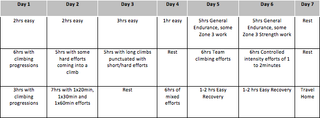
As you can see from this edited version of a real altitude training camp there is just as much time spent recovering as there is riding. The first four days are super easy. Then there are only 10 days of longer training before we back off for two more easy days at the end of camp. This overview should give you some perspective on the respect with which we approach living and training at altitude. In such an extreme environment there are so many variables that must be acknowledged but one rule holds true: always err on the side of caution. I have seen many first timers commence training too hard upon arrival. These same riders usually finish way down the results sheet when it comes time to race after their stay in the mountains.
Although it takes patience, time and a lot of resources to host an altitude training camp nearly every rider in this year's Tour de France would have spent significant time living and training at 1600-2400m prior to competing. If done the right way these athletes will realise cellular adaptations which improve the capacity of their aerobic engine while being subjected to long days in the saddle and equally long days of recovery. There is not much to do atop Mount Teide or in Sierra Nevada but if channelled correctly the isolation and sensory deprivation that comes from living in such a rarefied environment can help narrow ones focus on peak performance. From personal experience and the research conducted to write this piece, it's clear that altitude produces changes to your body that make you stronger. The training done at camp is long and sometimes intense and with no other distractions, you and your teammates live in a tiny bubble where everything is geared towards winning the next Grand Tour.
Mick
P.S. Keep an eye out for news of an exciting new project I'm working on: Pulse Planet. Together with Bjarne Riis and Lars Seier we are creating an online cycling universe that combines the best of our Pro Cycling experience with cutting edge computer technology and state of the art predictive modelling. Pulse Planet will launch late in 2017.
